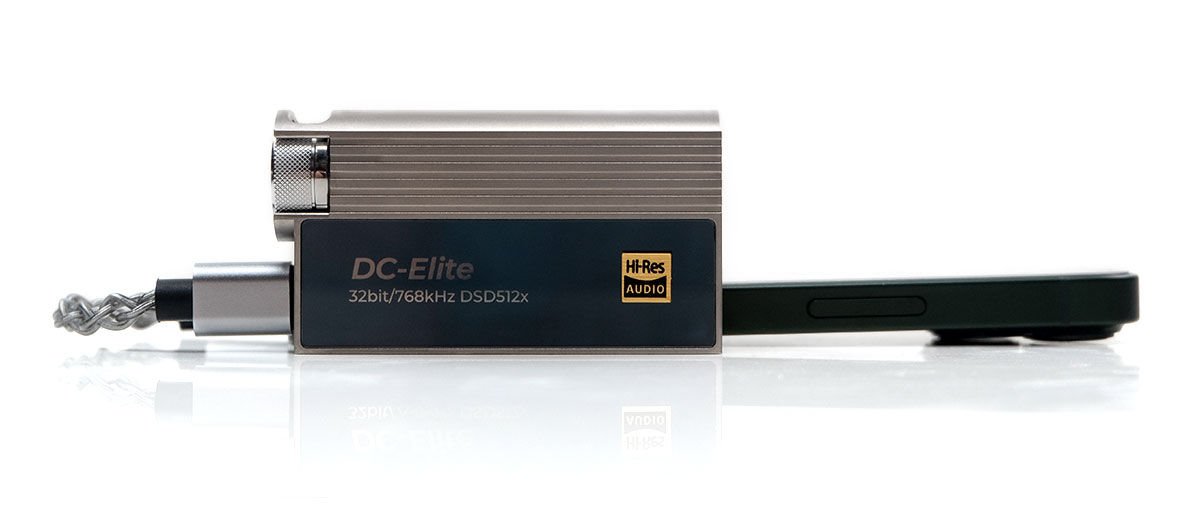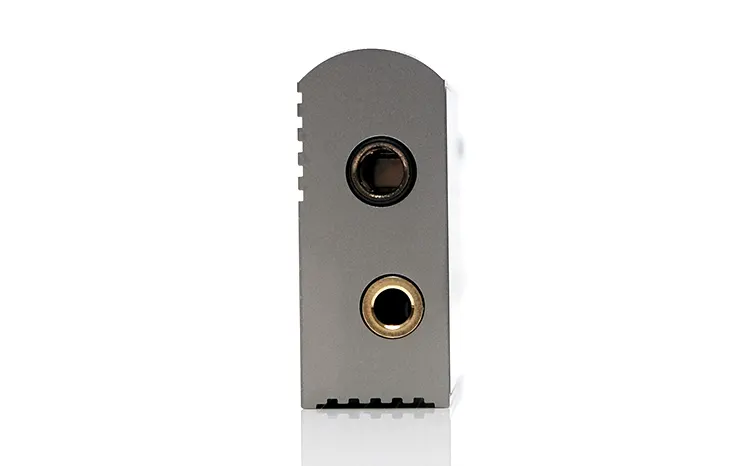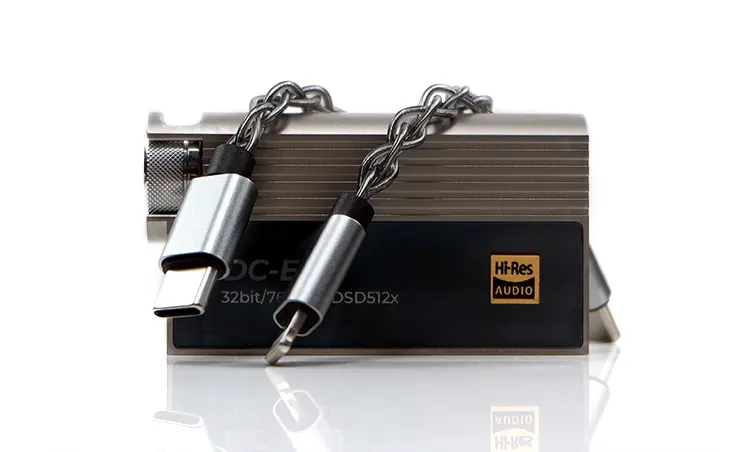Today, Marcus reviews the iBasso DC-Elite, which is a flagship ROHM dongle DAC featuring a 24-step attenuator and up to 280mW of output power. It is priced at $449.
Disclaimer: This sample was sent to me in exchange for my honest opinion. Headfonics is an independent website with no affiliate links or status. I thank iBasso for this opportunity.
Click here to read more about iBasso products we have previously reviewed on Headfonics.
Note that this article follows our current scoring guidelines, which you can read in more detail here.
Many enthusiasts are already calling the iBasso DC-Elite dongle DAC a mini DX320 MAX Ti.
A few reasons give credence to this ‘mini’ descriptor, including a true 24-stepped attenuator and the same ROHM DAC. Reasons that make this flagship dongle a very unique albeit pricey proposition.
Priced at $449, this is the most expensive dongle I have personally reviewed. Not only is it a strong competitor to other high-end dongles but it might also be a solid alternative to excellent DAPs such as iBasso’s DX180.
My hot take? The DC-Elite is beautifully built, sounds wonderfully dynamic and detailed, and perhaps slightly smoother-sounding than its bigger sibling, the flagship DX320 MAX Ti.
It is not the most powerful dongle out there in the market. That accolade goes to the FiiO KA17 and the GO bar from iFi Audio.
Sadly, I have neither here to compare but I will be looking at how the DC-Elite stacks up against worthy competitors such as the Cayin RU7, HiBy’s FC6, and the Questyle M15 in my full review below.
Features
The iBasso DC-Elite is a high-end dongle DAC with a single ROHM BD34301EKV chipset and no less than 6 opamps capable of delivering up to 280mW of balanced output power and 120mW single-ended into a 32Ω.
It is designed to connect via OTG to your iPhone (Lightning or USB-C) or Android smartphone, (USB-C) for on-the-go digital audio or sit neatly on your desk as a USB-DAC connected to a PC or MAC.
This is not the first time iBasso has used ROHM chipsets with no less than a quad-design inside the DX320 MAX Ti and dual inside the regular DX320. However, this is the first dongle that I know of that uses a ROHM DAC.
The DC-Elite can decode up to PCM 32BIT/768kHz and DSD512 natively via USB. It can also output via coaxial with a maximum decoding rate of PCM 32BIT/768kHz.
No MQA is decoding as far as I am aware from the DC-Elite, but you do get 2 digital filters from the ROHM chipset with access to a sharp roll-off and a slow roll-off.
To top all of this off, this is the only dongle DAC currently in the market that uses a true 4-wiper 24-step attenuator for volume control offering a claimed +/- 0.1dB of channel tolerance between each step rather than the industry norm of around +/-2dB.
At a portable level, this is a huge switch up from traditional digital volume or relay-based systems, specifically in dynamic range retention and channel balancing at low volume levels for sensitive gear.
If you are concerned about the magnitude of volume increase per step you can combine the physical attenuator with the vastly improved iBasso UAC app and its PCM volume reduction option to lessen the jumps by up to 2dB.
Design
iBasso was not messing around with the DC-Elite design. It’s probably the biggest and heaviest dongle I have handled to date measuring 64mm x 35mm x 14.5mm and 60g in weight.
However, the Titanium Alloy housing is truly next level. I would lay down some money on this being one of the most robust dongles on the market today.
The form factor is curved on one side and straight-edged on the other with copious amounts of fluted type finishing on the metal down the left panel and to the right of the top panel.
Sensibly, the stepped attenuator dial is safely protected behind an extended portion of the chassis that acts as a circular protective guard.
Despite the excellent knurling finish on the dial the guard opening to access it is slightly narrow so some might quibble at the lack of space to easily twist the attenuator single-handed.
Also, it has no volume level indicator on the dial which might make things difficult when switching between sensitive gears and their various volume level requirements.
The front and back are finished with attractive similarly dark-colored tempered glass panels. Sadly, the DC-Elite has no LCD screen under these panels which I know some find useful on other dongles for bitrate, volume, and sampling visual confirmation.
For granular control and deeper options sets, you do have the UAC app from the Play Store but no app compatibility on the Apple App Store for iPhone users.
One final note, I am super glad the DC-Elite comes with an attractively tightly fitted leather case. Not only is it finished in my favorite color of green, but it also covers up some uncomfortably sharp finishing on the straight left panel of the dongle.
I/O
The DC-Elite has 4 I/O ports for use with headphones and IEMs as well as operating as a USB-DAC or connection to a 3rd party external DAC.
On the front panel, you will get a SE 3.5mm TRS and a balanced 4.4mm Pentaconn analog output, primarily for headphones and IEMs. On the opposite panel, tucked in beside the potentiometer screen guard, is a standard USB-C port for OTG and USB-DAC functionality.
The more discreet connection option is an SPDIF or coaxial output which duals from the 3.5mm TRS PO and can be activated with a long press from a narrow button in the middle of the left panel.
You can also activate the coaxial output option from the iBasso UAC app if you are using an Android smartphone.
One final information-based output is a very slim LED light on the left panel which will light up a different color based on the selected format, output mode, and power status of the DC-Elite. This includes red for standby, white for coaxial, and blue or green for DSD or PCM playback.
Controls
The iBasso UAC app is beginning to look a lot like an additional UI screen of the Mango Player app from their Android DAPs. Brownie points there for some styling consistency and it does seem to have come a long way from its basic volume control system from a few years ago.
For a start, it will tell you that yes you have the DC-Elite connected to your smartphone and second, you get plenty of controls and filter options on a single clearly labeled screen.
Many of the options are possible via the slim left panel button but it is handy to know exactly what you have pressed and if it is active without having to look at said button.
Probably the most important is the PCM volume reduction option which allows you to decrease the volume loudness level by up to 2 dB.
I found this particularly useful when moving through the steps for very sensitive gear as the default 1 dB step increase can be quite aggressive for IEMs such as the Vision Ears VE10 and the Campfire Audio Trifecta.
As a small addendum, some software apps such as the FiiO Pure Player do have a measure of digital pre-amp control if you turn on the Exclusive USB Audio Output mode.
Again, another useful level of granular volume control when used in tandem with the UAC app. It can reduce potential aggressive volume lifts from the attenuator with sensitive gear by reducing the default gain level.
Packaging & Accessories
The iBasso DC-Elite comes in a standard compact lightly grey-themed retail box with a nicely presented dual layer of accessory shelving inside.
Aside from the unit itself, you get two short braided 4-core USB-C to USB-C and Lighting ICs that I find very pliant and easy to use. They are also just the right length for hooking up to moderately sized smartphones and iPhones.
Shortly after receiving the DC-Elite iBasso also released the CB19 which is a USB-C to USB-C and USB-A dual-purpose cable.
This version is priced at $20 and allows you to connect the dongle to your phone and a power bank at the same time to split the power and data and ensure the DC-Elite does not quickly drain your phone’s battery during playback.
Quite a neat idea and at $20 probably a no-brainer to buy and use if you have a slimline power bank.
You also get a small but perfectly formed green leather case that keeps the DC-Elite nicely protected. It’s a fairly tight fit but you want that to prevent it from falling out during use.
Aside from that, you get a small USB-C to USB-A converter for connecting to your PC or Mac along with some warranty and authenticity paperwork.
Click on page 2 below for my sound impressions and recommended pairings.








